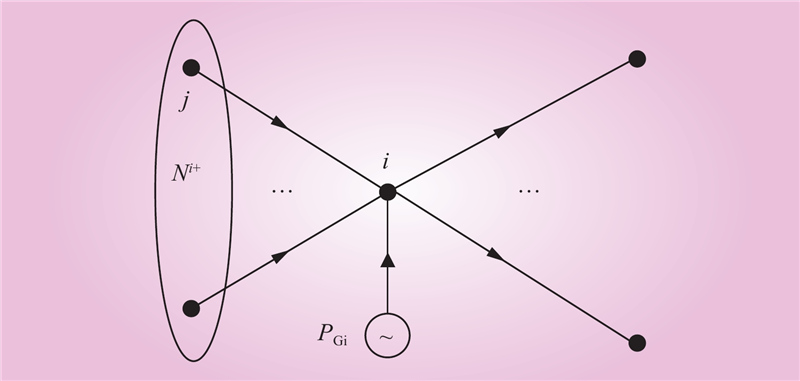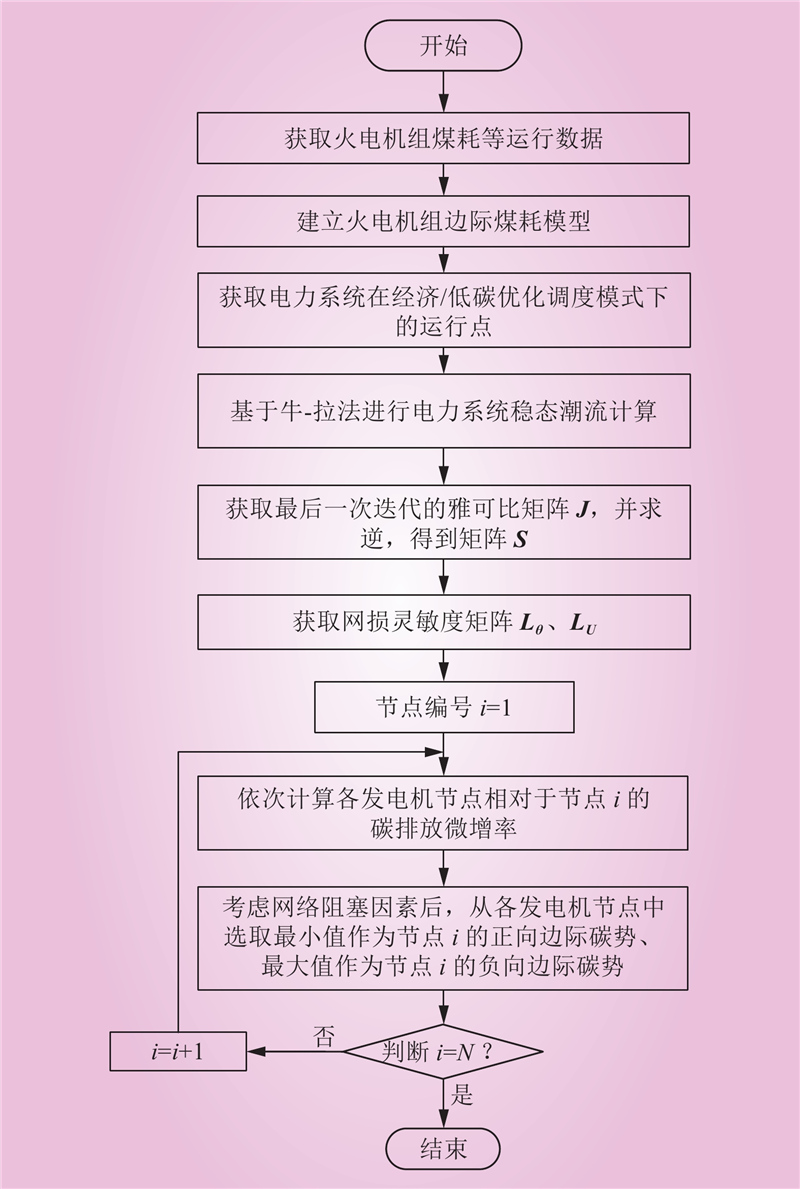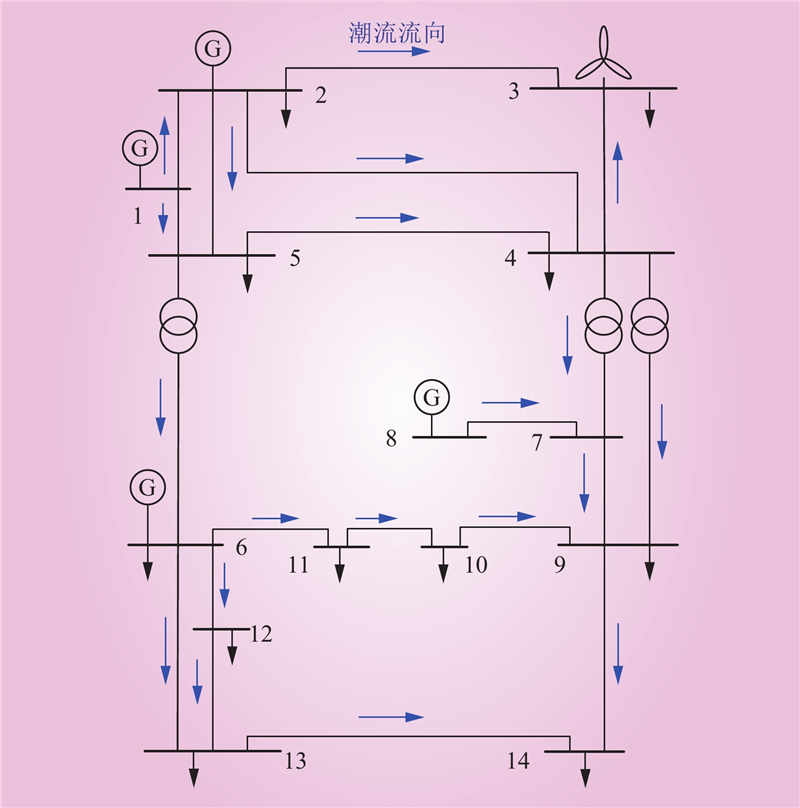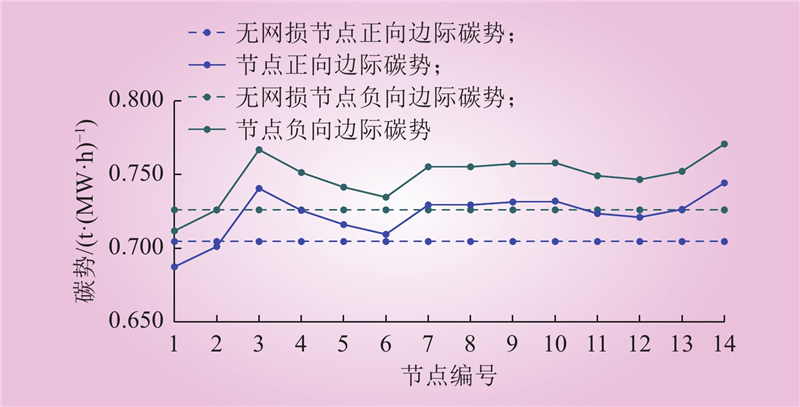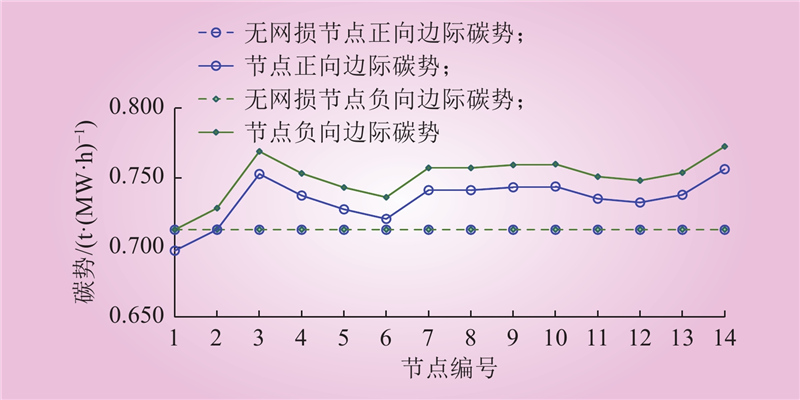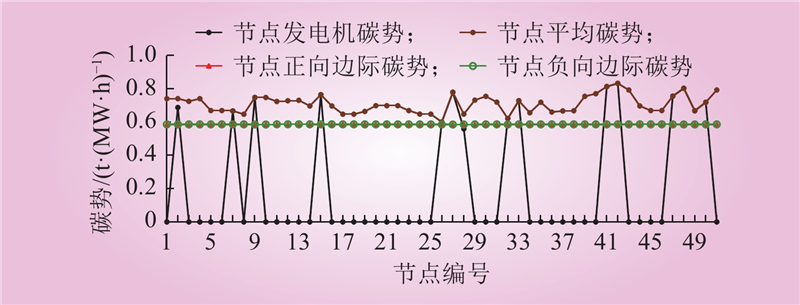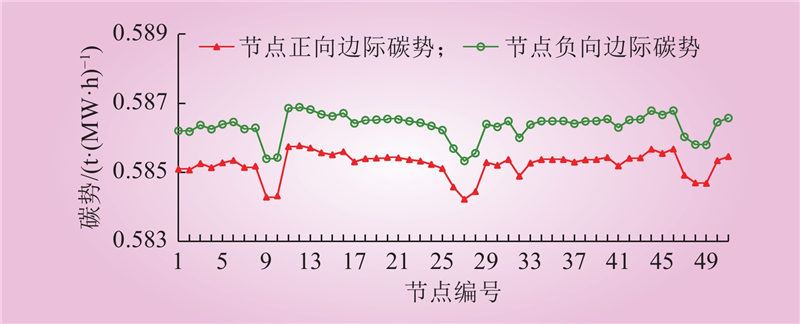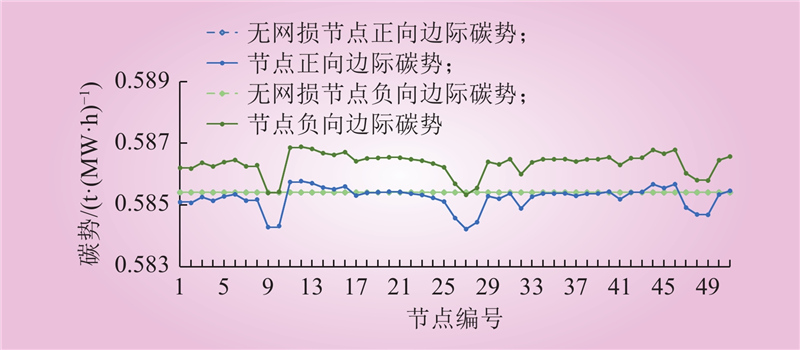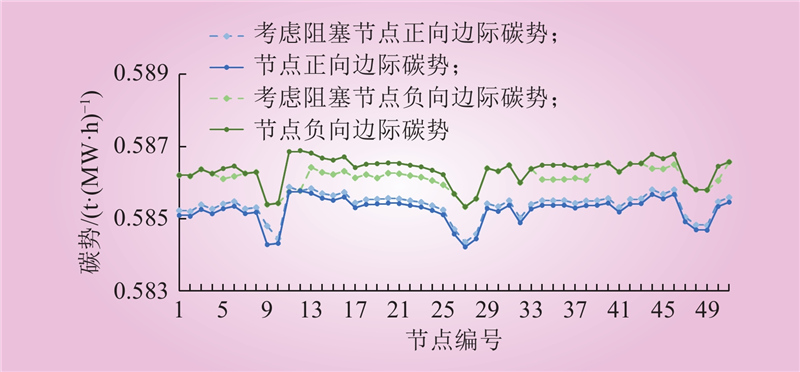| 1 |
代贤忠. 碳中和对能源领域的影响[EB/OL]. (2021-10-17)[2023-04-09]. https://baijiahao.baidu.com/s?id=1702895338045951179&wfr=spider&for=pc.
|
| 2 |
张运洲, 张宁, 代红才, 等. 中国电力系统低碳发展分析模型构建与转型路径比较[J]. 中国电力, 2021, 54 (3): 1- 11.
|
|
ZHANG Yunzhou, ZHANG Ning, DAI Hongcai, et al. Model construction and pathways of low-carbon transition of China's power system[J]. Electric Power, 2021, 54 (3): 1- 11.
|
| 3 |
董福贵, 夏美娟, 李婉莹. 基于PSO-GWO的省级能耗强度预测与碳减排潜力估算[J]. 中国电力, 2023, 56 (9): 226- 234.
|
|
DONG Fugui, XIA Meijuan, LI Wanying. Prediction of provincial energy consumption intensity and estimation of carbon emission reduction potential based on PSO-GWO[J]. Electric Power, 2023, 56 (9): 226- 234.
|
| 4 |
王小飞, 任洪波, 吴琼, 等. 考虑中长期碳减排约束的区域综合能源系统多阶段动态规划[J]. 中国电力, 2023, 56 (11): 185- 196.
|
|
WANG Xiaofei, REN Hongbo, WU Qiong, et al. Multi-stage dynamic plan of regional integrated energy system considering medium and long-term carbon emission reduction constraints[J]. Electric Power, 2023, 56 (11): 185- 196.
|
| 5 |
陈丽霞, 孙弢, 周云, 等. 电力系统发电侧和负荷侧共同碳责任分摊方法[J]. 电力系统自动化, 2018, 42 (19): 106- 111.
|
|
CHEN Lixia, SUN Tao, ZHOU Yun, et al. Method of carbon obligation allocation between generation side and demand side in power system[J]. Automation of Electric Power Systems, 2018, 42 (19): 106- 111.
|
| 6 |
KANG C Q, ZHOU T R, CHEN Q X, et al. Carbon emission flow from generation to demand: a network-based model[J]. IEEE Transactions on Smart Grid, 2015, 6 (5): 2386- 2394.
DOI
|
| 7 |
李姚旺, 张宁, 杜尔顺, 等. 基于碳排放流的电力系统低碳需求响应机制研究及效益分析[J]. 中国电机工程学报, 2022, 42 (8): 2830- 2842.
|
|
LI Yaowang, ZHANG Ning, DU Ershun, et al. Mechanism study and benefit analysis on power system low carbon demand response based on carbon emission flow[J]. Proceedings of the CSEE, 2022, 42 (8): 2830- 2842.
|
| 8 |
汪超群, 陈懿, 文福拴, 等. 电力系统碳排放流理论改进与完善[J]. 电网技术, 2022, 46 (5): 1683- 1691.
|
|
WANG C Q, CHEN Y, WEN F S, et al. Improvement and perfection of carbon emission flow theory in power systems[J]. Power System Technology, 2022, 46 (5): 1683- 1691.
|
| 9 |
李岩松, 刘启智, 张朕搏, 等. 基于电网功率分布的碳排放流计算方法[J]. 电网技术, 2017, 41 (3): 840- 844.
|
|
LI Yansong, LIU Qizhi, ZHANG Zhenbo, et al. Algorithm of carbon emission flow based on power distribution[J]. Power System Technology, 2017, 41 (3): 840- 844.
|
| 10 |
周全, 冯冬涵, 徐长宝, 等. 负荷侧碳排放责任直接分摊方法的比较研究[J]. 电力系统自动化, 2015, 39 (17): 153- 159.
|
|
ZHOU Quan, FENG Donghan, XU Changbao, et al. Methods for allocating carbon obligation in demand side: a comparative study[J]. Automation of Electric Power Systems, 2015, 39 (17): 153- 159.
|
| 11 |
康重庆, 杜尔顺, 李姚旺, 等. 新型电力系统的“碳视角”: 科学问题与研究框架[J]. 电网技术, 2022, 46 (3): 821- 833.
|
|
KANG Chongqing, DU Ershun, LI Yaowang, et al. Key scientific problems and research framework for carbon perspective research of new power systems[J]. Power System Technology, 2022, 46 (3): 821- 833.
|
| 12 |
WANG X, GONG Y, JIANG C W. Regional carbon emission management based on probabilistic power flow with correlated stochastic variables[J]. IEEE Transactions on Power Systems, 2015, 30 (2): 1094- 1103.
DOI
|
| 13 |
SHEN W, QIU J, MENG K, et al. Low-carbon electricity network transition considering retirement of aging coal generators[J]. IEEE Transactions on Power Systems, 2020, 35 (6): 4193- 4205.
DOI
|
| 14 |
DENG L R, LI Z S, SUN H B, et al. Generalized locational marginal pricing in a heat-and-electricity-integrated market[J]. IEEE Transactions on Smart Grid, 2019, 10 (6): 6414- 6425.
DOI
|
| 15 |
ZHONG W F, XIE K, LIU Y, et al. Nash mechanisms for market design based on distribution locational marginal prices[J]. IEEE Transactions on Power Systems, 2022, 37 (6): 4297- 4309.
DOI
|
| 16 |
BAI L Q, WANG J H, WANG C S, et al. Distribution locational marginal pricing (DLMP) for congestion management and voltage support[J]. IEEE Transactions on Power Systems, 2018, 33 (4): 4061- 4073.
DOI
|
| 17 |
WANG Y Q, QIU J, TAO Y C. Optimal power scheduling using data-driven carbon emission flow modelling for carbon intensity control[J]. IEEE Transactions on Power Systems, 2022, 37 (4): 2894- 2905.
DOI
|
| 18 |
LV S, CHEN S, WEI Z N, et al. Power–transportation coordination: toward a hybrid economic-emission dispatch model[J]. IEEE Transactions on Power Systems, 2022, 37 (5): 3969- 3981.
DOI
|
| 19 |
张刚, 张峰, 张利, 等. 考虑碳排放交易的日前调度双阶段鲁棒优化模型[J]. 中国电机工程学报, 2018, 38 (18): 5490- 5499.
|
|
ZHANG Gang, ZHANG Feng, ZHANG Li, et al. Two-stage robust optimization model of day-ahead scheduling considering carbon emissions trading[J]. Proceedings of the CSEE, 2018, 38 (18): 5490- 5499.
|
| 20 |
周孟然, 王旭, 邵帅, 等. 考虑需求响应和碳排放额度的微电网分层优化调度[J]. 中国电力, 2022, 55 (10): 45- 53.
|
|
ZHOU Mengran, WANG Xu, SHAO Shuai, et al. Hierarchical optimal scheduling of microgrid considering demand response and carbon emission quota[J]. Electric Power, 2022, 55 (10): 45- 53.
|
| 21 |
陈厚合, 茅文玲, 张儒峰, 等. 基于碳排放流理论的电力系统源-荷协调低碳优化调度[J]. 电力系统保护与控制, 2021, 49 (10): 1- 11.
|
|
CHEN Houhe, MAO Wenling, ZHANG Rufeng, et al. Low-carbon optimal scheduling of a power system source-load considering coordination based on carbon emission flow theory[J]. Power System Protection and Control, 2021, 49 (10): 1- 11.
|
| 22 |
卢治霖, 刘明波, 尚楠, 等. 考虑碳排放权交易市场影响的日前电力市场两阶段出清模型[J]. 电力系统自动化, 2022, 46 (10): 159- 170.
|
|
LU Zhilin, LIU Mingbo, SHANG Nan, et al. Two-stage clearing model for day-ahead electricity market considering impact of carbon emissions trading market[J]. Automation of Electric Power Systems, 2022, 46 (10): 159- 170.
|
| 23 |
缑新科, 崔乐乐, 巨圆圆, 等. 火电厂机组煤耗特性曲线拟合算法研究[J]. 电力系统保护与控制, 2014, 42 (10): 84- 89.
|
|
GOU Xinke, CUI Lele, JU Yuanyuan, et al. Study on curve fitting algorithm for thermal power plant units coal consumption[J]. Power System Protection and Control, 2014, 42 (10): 84- 89.
|
| 24 |
冯欣, 杨军. 考虑网络损耗的碳排放流理论改进与完善[J]. 电力自动化设备, 2016, 36 (5): 81- 86.
|
|
FENG Xin, YANG Jun. Improvement and enhancement of carbon emission flow theory considering power loss[J]. Electric Power Automation Equipment, 2016, 36 (5): 81- 86.
|
| 25 |
RUIZ P A, RUDKEVICH A. Analysis of marginal carbon intensities in constrained power networks[C]//2010 43rd Hawaii International Conference on System Sciences. Honolulu, HI, USA. IEEE, 2010: 1–9.
|
| 26 |
周全. 节能减排环境下电力系统碳排放责任分摊机制研究[D]. 上海: 上海交通大学, 2016.
|
|
ZHOU Quan. The study of carbon emission obligation allocation in power systems under the environment of energy-saving and emission-reduction[D]. Shanghai: Shanghai Jiaotong University, 2016.
|
| 27 |
陈厚合, 张鹏, 姜涛, 等. 基于灵敏度分析的综合能源系统运行安全性的研究[J]. 电力自动化设备, 2019, 39 (8): 95- 103.
|
|
CHEN Houhe, ZHANG Peng, JIANG Tao, et al. Security analysis based on sensitivity analysis for integrated electric and gas energy system[J]. Electric Power Automation Equipment, 2019, 39 (8): 95- 103.
|
| 28 |
高慧敏, 章坚民, 江力. 基于二阶网损无功灵敏度矩阵的配电网无功补偿选点[J]. 电网技术, 2014, 38 (7): 1979- 1983.
|
|
GAO Huimin, ZHANG Jianmin, JIANG Li. Optimal location of reactive power compensation for distribution network based on second order loss-reactive power sensitivity matrix[J]. Power System Technology, 2014, 38 (7): 1979- 1983.
|
| 29 |
蔡宇, 李保卫, 胡泽春, 等. 燃煤机组碳排放指标计算及影响因素分析[J]. 电网技术, 2013, 37 (5): 1185- 1189.
|
|
CAI Yu, LI Baowei, HU Zechun, et al. Calculation of carbon emission index of coal-fired generating unit and analysis on influencing factors[J]. Power System Technology, 2013, 37 (5): 1185- 1189.
|
| 30 |
沈照人. 回归分析法在碳排放核查中测算发电企业燃煤发热量的应用[J]. 煤质技术, 2021, 36 (5): 69- 74.
DOI
|
|
SHEN Zhaoren. The application of regression analysis method to measure the calorific value of coal in power generation enterprises in carbon emission verification[J]. Coal Quality Technology, 2021, 36 (5): 69- 74.
DOI
|
| 31 |
康重庆, 程耀华, 孙彦龙, 等. 电力系统碳排放流的递推算法[J]. 电力系统自动化, 2017, 41 (18): 10- 16.
DOI
|
|
KANG Chongqing, CHENG Yaohua, SUN Yanlong, et al. Recursive calculation method of carbon emission flow in power systems[J]. Automation of Electric Power Systems, 2017, 41 (18): 10- 16.
DOI
|
| 32 |
王景亮, 张焰, 王承民, 等. 基于灵敏度分析与最优潮流的电网无功/电压考核方法[J]. 电网技术, 2005, 29 (10): 65- 69.
|
|
WANG Jingliang, ZHANG Yan, WANG Chengmin, et al. Power system reactive power/voltage assessment based on sensitivity analysis and optimal power flow[J]. Power System Technology, 2005, 29 (10): 65- 69.
|
| 33 |
王洪涛, 邹斌, 张亮. 基于节点传输贡献量的省间联络线潮流近似计算[J]. 电力自动化设备, 2020, 40 (6): 135- 141.
|
|
WANG Hongtao, ZOU Bin, ZHANG Liang. Approximate calculation of inter-provincial tie-line power flow based on node transmission contribution[J]. Electric Power Automation Equipment, 2020, 40 (6): 135- 141.
|
| 34 |
VENKATESWARA REDDY M, MUNI B P, SARMA A V R S. Enhancement of voltage profile for IEEE 14 bus system with inter line power flow controller[C]//2016 Biennial International Conference on Power and Energy Systems: Towards Sustainable Energy (PESTSE). Bengaluru, India. IEEE, 2016: 1–5.
|


